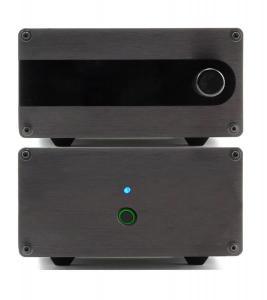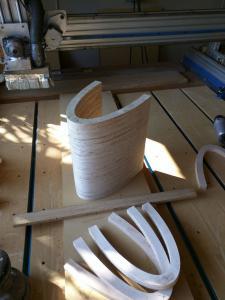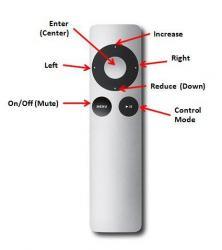Newsletter – New Year 2016
First Newsletter of 2016
I started writing this newsletter during the last week of the year while in Colorado with family over the Christmas break where it was cold. Wearing long pants, socks, and a sweater. And rarely more than 10 feet away from a red hot space heater staring me in the face. I normally live in south Florida where it was in the 80’s over the last week of 2015. And where, If you work at it, you can just about live year round in shorts and flipflops. And I do work at it.
As this over-clad Floridian worked at staying warm at year’s end I had a chance to reflect a little on 2015 and think a lot about what we’re planning for 2016 at Tortuga Audio.
I started to write paragraphs about 2015 but decided to take a bit more time to write a whole lot less. I took enough time to reduce it all into 5 thankfully brief bullets.
- 3rd year anniversary since going live with our online store
- Page views on our website hit the 265,000 mark
- Released the 3rd generation of our LDR attenuation technology
- Released the LDR3.V2 and LDR1B.V2 passive preamps
- Favorable review of the LDR3.V2 published in Absolute Sound magazine
Yet the best part of 2015 was all the great positive feedback from our customers as well as the growing positive buzz about Tortuga Audio preamps that can be found on more and more online audio forums.
Looking Forward
Looking forward, there’s little doubt that 2016 is going to be our most ambitious and challenging year yet. Here’s an overview of what we’re planning for 2016.
PS12 & PS12B Power Supplies

Later in January and February, we’ll be releasing two new products – the PS12B and the PS12 power supplies. Although similar in appearance they are very different designs yet both provide up to 400 ma of 12 VDC power. They are intended for powering our LDR3.V2 or LDR1B.V2 passive preamps in lieu of our standard linear regulated “wall wart” power supply. They make also be used to power other products to be released later in 2016.
The PS12 is being offered in response to international customers with 240 VAC main power. Our standard 12V wallwart is only available for 120 VAC mains and try as we might we couldn’t find an acceptable comparable quality power supply for the international 240 VAC mains markets. In the interim we’ve been shipping a 240 to 120 VAC step-down converter with each preamp sold to 240 VAC international customers; not a satisfactory solution. The PS12 solves this problem. The PS12 can be configured for both 120 and 240 VAC mains for the LDR3.V3, LDR1B.V2 or similar future units that rely on an external 12 VDC power supply. Once it’s released the PS12 will replace our existing wallwart power supply for all 240 VAC mains international customers for an additional discounted cost and will be available to US and other 120 VAC mains customers as an upgrade option.
The PS12B was developed as a true battery based power supply providing the ultimate low noise power for those seeking the best possible overall performance. The PS12B has an integral smart charger and integrates well with the LDR3.V2 and LDR1B.V2 Passive Preamps including automatic disconnection of the charger when the preamp is turned on. The PS12B can be configured for either 120 or 240 VAC mains and includes 7.8 AH of replaceable sealed lead acid battery. More info on the PS12B can be found here.
2016 – The Year of the Buffer
We’ve hinted about it. We’ve talked about it. We’ve argued about it. We’ve kicked designs around for all of 2015. But in 2016 we are definitely coming out with an audio buffer product! When exactly? That’s not clear. But it will happen in 2016.
I admit we’ve struggled conceptually with offering a buffer. Why? Because we’ve built Tortuga Audio around our passive preamps which avoid the necessity (and potential downsides) of a buffer by design.
So why offer a buffer now? First, there will always be combinations of sources and amplifiers where a pure passive attenuator will not be a good fit. Not often but it does happen. Secondly, and as a matter of simple marketing reality, there’s a significant number of audiophiles who view an active preamp (attenuator with a buffer/gain stage) as essential notwithstanding the extraordinary performance of our passive designs. Last but not least, we must remain open to the possibility that there’s always room for improvement to the performance our existing preamp designs and that a buffer may well be a part of that.
We have both solid state and tube buffer designs in various stages of development. As I write this we haven’t decided which type to offer – perhaps both. On the one hand, the solid state buffer design will be a great fit with our PS12B power supply for the ultimate low noise performance. On the other hand, the mythos and market appeal of tubes argues for a tube buffer. In the end we will only offer a buffer that doesn’t compromise the amazing audio quality of our existing LDR attenuators.
Next Generation LDR Design
Work on the next generation LDR preamp controller began in 2015 and will be released later in 2016. This will be a complete redesign of the hardware and a substantial redesign of the software. Key goals include improved overall attenuator accuracy and performance together with a new architecture that lends itself more readily to multi-channel operation. In particular, we are targeting an improved balanced preamp design as well as multi-channel analog LDR attenuation for active crossovers.
Part of this includes a stand-alone control/display board that connects to and controls one or more LDR attenuator board(s) via a serial network. The control/display board will replace the current 7 segment display modules with a single OLED graphical display. The resulting remote/display design will be more visually menu driven making control simpler and more intuitive.
Technically, this is an ambitious update to our preamp controller/attenuator. In addition to the existing IR remote control the new design will also include optional bluetooth which will allow control via IOS and Android apps running on smartphones. The new design will also employ mostly surface mount components to keep board size and cost down.
The new LDR design will also be available as an OEM product available to other manufacturers. We are already having discussions on this will several manufactures of high end preamp designs and look forward to expanding our business
Boathull Speakers
We’ve been working on a construction approach to building speaker cabinets as well as a possible new enclosure design for our preamps. The construction involves stacked lamination of milled baltic birch plywood and/or bamboo plywood. The picture on the right shows a partially built “boathull” shaped speaker cabinet being fabricated from baltic birch for a customer using this technique.
Our next build using this approach will be a floor standing ported boathull cabinet housing either a 10 or 12 inch full range “Audio Nirvana” driver. This speaker will become our baseline design for our full range boathull speaker offering. Once released, these will be built-to-order speakers only.
After years of working with full range speakers, I’m now convinced they offer the best overall combination of value and performance that is hard to duplicate with more complex speakers with multiple drivers.
Why full range? A full range driver is capable of delivering all or most of the 20Hz-20kHz audible range from a single driver. Music from a single point source delivers the most coherent sound possible with excellent stereo imaging and sound stage. There’s also the complete absence of any crossover electronics (active or passive) thus eliminating all phase shifting and timing artifacts related to separating the audio signal into low, mid and hi frequency ranges for multiple drivers.
The challenge with full range is finding a single driver that is able to deliver the sonic goods. To this end we’ve selected Audio Nirvana full ranger drivers for our speaker. These are amazing drivers that cost us upwards of $800-1000 a pair just for the raw drivers even before considering a cabinet to house them. Are they worth it? We definitely think so. If you’re interested in finding out more about these drivers check out the Audio Nirvana website and especially note the customer comments section towards the bottom of their very long single webpage.
We’ll be talking more about these speakers in the months ahead and are very excited to be offering these uniquely constructed high performance custom order speakers.





